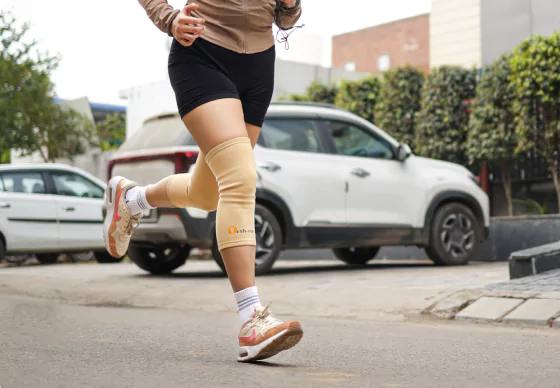Knee pain is a common issue that can arise from injuries, aging, or medical conditions such as arthritis. Identifying the right knee support brace can make a huge difference in comfort, mobility, and long-term joint health. Since every person’s needs are unique, choosing the right product requires some understanding of the available options and the specific reasons for knee joint pain you may be facing.
Here’s a detailed guide to help you select the best option for your needs:
1. Identify the Cause of Pain
Before buying any support, it’s important to know why you’re experiencing discomfort. Conditions like ligament strains, meniscus injuries, arthritis, or post-surgical recovery all demand different levels of support. Consulting with a doctor or physiotherapist is the first step in making the right choice.
2. Types of Knee Support Braces
There are several designs available in the market, each serving a specific purpose:
- Elastic Knee Support: Elastic knee support is ideal for mild discomfort, swelling, or as a preventive measure during workouts. These are lightweight, flexible, and allow free movement while offering gentle compression.
- Hinged Braces: Provide more stability and are often recommended for ligament injuries or after surgery.
- Wraparound Braces: Easy to wear and adjust, suitable for people who need occasional extra support.
- Rigid Braces: Offer maximum restriction of movement, commonly used for severe injuries or rehabilitation.
3. Comfort and Fit
A brace that doesn’t fit properly can cause more harm than good. Make sure to measure your knee circumference and choose a size that offers a snug fit without restricting blood flow. Breathable fabrics and adjustable straps also improve comfort for long-term use.
4. Activity Level
Your lifestyle plays a big role in selecting the right brace. For athletes, a lightweight and flexible brace may be better, while individuals recovering from surgery may need rigid support. Office workers with mild discomfort may benefit most from simple elastic supports.
5. Quality and Durability
Look for reliable orthopedic products that are tested for durability and made with high-quality materials. A well-constructed brace will provide consistent support and last longer, even with daily use.
6. Ease of Maintenance
Since braces come in contact with sweat and skin, it’s important to choose one that is easy to clean. Washable fabrics are a practical choice, especially if you plan to use the brace regularly.
Final Thoughts
Selecting the right knee support comes down to understanding your condition, activity level, and comfort needs. A well-chosen brace can reduce pain, prevent further injury, and support healing. Always consult a medical professional before starting long-term use of any brace to ensure it suits your specific condition.





Comments